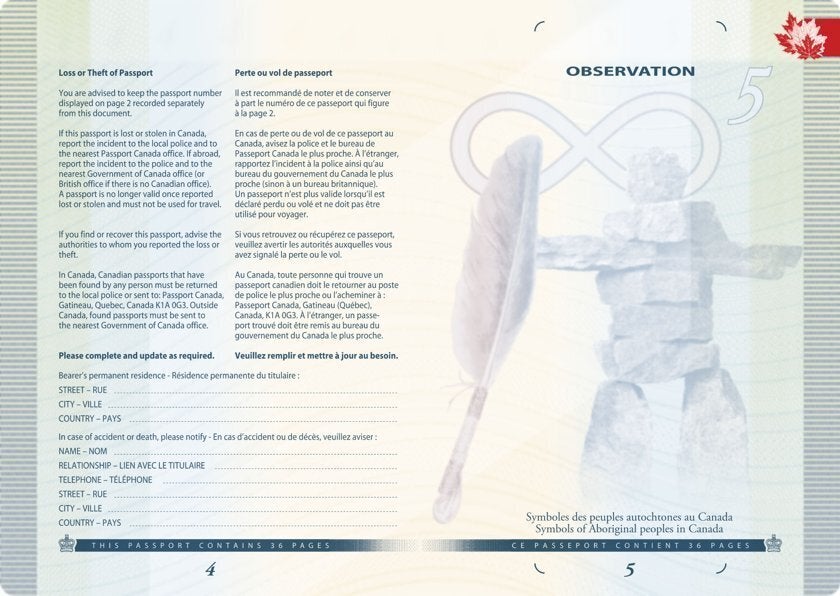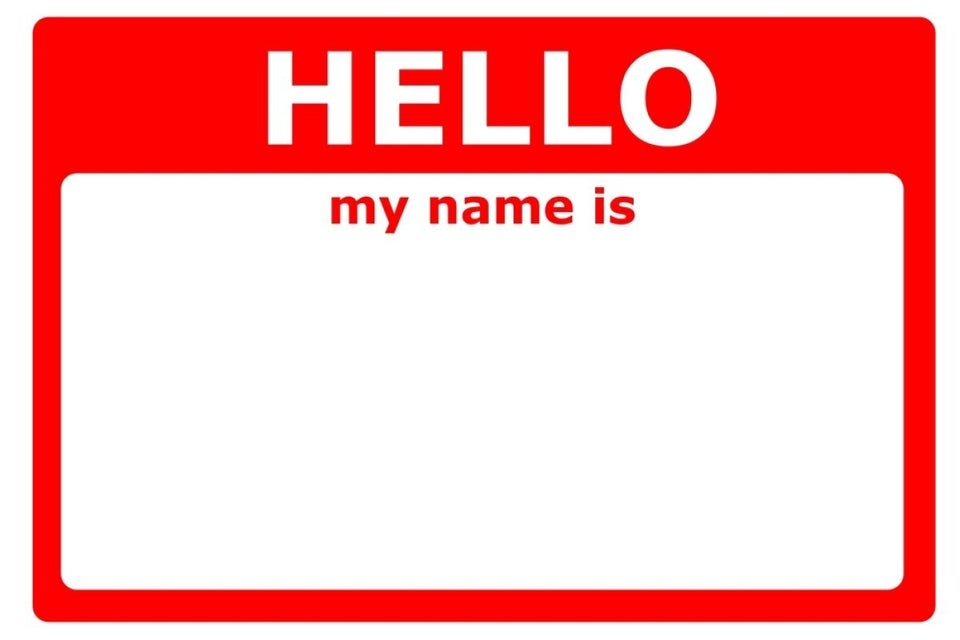The Conservative government’s fervour for Canadian history will play out on the pages of your new passport, soon to be unveiled after nine years of delays and cost overruns.
After a multimillion-dollar advertising campaign for the War of 1812 and the announcement that they plan to rename the Canadian Museum of Civilization in Ottawa as the Canadian Museum of History, the Tories are set to unveil new designs for Canada’s electronic passport that focus on key historical moments, HuffPost has learned.
Bureaucrats at first recommended the government adopt images of fauna and flora to grace the inside pages of the new travel document, similar to the United Kingdom’s passport, but the Conservatives chose instead to focus on history and follow the example of the United States’ passport with its images of the Declaration of Independence and Mount Rushmore.
“It will be something that Canadians can be proud to carry,” said Rick Roth, a spokesman for Foreign Affairs Minister John Baird. Roth refused to elaborate on the design sketches that will be part of the new electronic passport, which will be issued for five- and 10-year time periods.
The implementation of Canada’s ePassport, which includes an electronic chip with facial recognition information, has been delayed for nine years. A pilot program for diplomats and public office holders was planned for 2005 but did not get under way until 2009. The national roll-out was put on the back burner until the 2008 budget announced ePassports would be ready in 2011. Then it was 2012. Now, they should be ready in 2013.
STORY CONTINUES BELOW SLIDESHOW
Canada is the last G7 country to implement the international standards established by the International Civil Aviation Organization (ICAO) in 2003. All of Canada’s key allies and more than 95 countries, including Pakistan, Sudan and Tajikistan, have pushed ahead with the technology.
The specific reason for the delay is blacked out in documents released to The Huffington Post Canada under the Access to Information Act.
Passport Canada officials said funding delays and disagreements with management over the scope of the project contributed to the problem. The office operates on a cost-recovery basis and the ePassport required substantial upfront costs for technology and infrastructure.
In a report on the lessons learned, Passport Canada program manager Julie L’Ecuyer wrote that an unprecedented spike in passport applications in 2007 — after the U.S. imposed passport requirements on Canadian citizens crossing the border — contributed to the delay, as well as “misinterpretations of the requirement and design” of the ePassport.
Passport Canada began to plan for adoption of the ePassport in 2004, but a $2.2-million pilot program was started only in January 2009. It took 450 days longer than expected and cost $2.366 million — $165,000 more than planned, although a $622,000 budget increase for the project went mostly unspent, according to the records.
The pilot program was also plagued with problems: the contractor missed delivery deadlines; the first batch of passport booklets was of poor quality; a grammar error in the French text was discovered during the implementation phase; it took a long time to “figure out” how to safely deliver the transport keys; the ePassport symbol was not printed on the right page as per ICAO’s recommendation; and the chips did not respond on the first attempt when scanned. L’Ecuyer noted: “We were told 30 per cent of the chips don’t. ...”
The ePassports were also rushed through testing and Passport Canada suffered from a lack of technical expertise, L’Ecuyer wrote.
“In the end, the whole situation created a lot of stress and confusion,” she said.
The lengthy delays raised concerns with Passport Canada and Foreign Affairs officials who suggested in 2010 that the holdup could jeopardize Canadians’ easy access to the United States. Officials repeatedly noted that the U.S. required all visa waiver countries to issue ePassports and said Canada could lose its privileged status if the country didn’t move forward quickly with the new technology.
Security concerns also dogged the project.
The Office of the Privacy Commissioner raised questions about the security level of the chip, the privacy implications of using radio-frequency identification technology and potential future uses of the data chip.
Passport Canada explored the feasibility of adding a second biometric, such as fingerprints or iris scans, but decided in the end not to include more information on the chip than what is found on page 2 of the current passport.
The system, however, is set up to use facial recognition software if desired. One briefing note states: “US and Canada have no immediate plans for automated border entry systems using facial images in ePassports.” But if both countries wanted to, they could easily implement such a network. Passport Canada’s facial-recognition database has more than 20 million records that include old photos of passport applicants that it uses to match new applicants and those seeking renewals.
Andrew Clement, a professor at the faculty of Information at the University of Toronto, is particularly concerned by Passport Canada’s growing database.
He believes Passport Canada should have both consulted the public on the type of biometric information it wanted to collect and publicly stated what future use it might have for the data.
“The database could be used for other purposes if there aren’t sufficient restraints on it,” Clement said in an interview. He noted that the Crown-owned Insurance Corporation of British Columbia (ICBC) offered the Vancouver police the use of its facial recognition technology and database to find people involved in the Stanley Cup hockey riot in 2011.
The temptation over time to use the database as a way of identifying people from photographs could just be too great, he said.
“It is opening the door to a range of possible biometrics. They are creating an online biometric database which needs very strong safeguards, and they are proceeding without due oversight,” Clement said.
Several other Canadian agencies collect biometric information: the RCMP runs the Canadian Criminal Real Time Identification Services; the Canadian Border Services Agency (CBSA) has the NEXUS program for frequent travellers to the United States; CBSA also has a 5CC information sharing program; and, with Citizenship and Immigration Canada, it operates a Temporary Resident Biometrics Project. Provincial motor vehicle operator licensing units also have large facial-recognition databases.
Passport Canada has so far issued some 50,000 diplomatic and special ePassports using the new chip technology. It expects to begin the rollout to the general public next spring.
To make up for the higher cost of the ePassports, Canadians will have to pay more: $57 for a five-year child passport, $120 for a five-year adult passport and $160 for a new 10-year passport for adults.
Also on HuffPost


